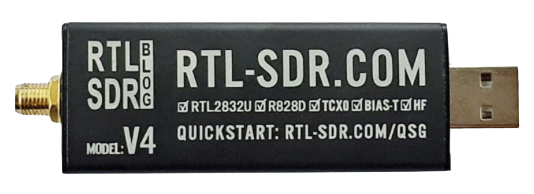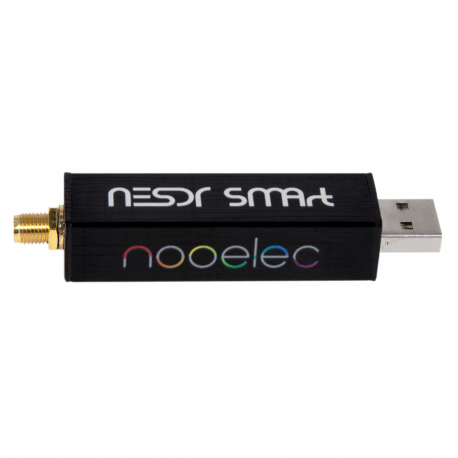
Palomar Amateur Radio Club STEM Experimentation Lab
📡 RTL-SDR Information ⇒ Note: This page is not yet complete. ⇐
The RTL-SDR is probably the most widely known and used receive-only SDR. It is an inexpensive software defined radio USB dongle that is ideal for conducting all kinds of RF experiments. The RTLSDR Information webpage in the references lists many applications that can use this SDR. These applications encompass a range of interesting topics and give a good idea of just how versatile this device is.
There are a number of different sources for RTL-SDR devices. The ones used in the STEMLab are made by RTL-SDR Blog. If you look at alternative RTL-SDRs, be sure and check their specs as these can vary depending on their individual implementation.
There are two RTL-SDR Blog versions available now, v3 and v4. Version 4 is the latest but being relatively new it isn't as universally supported as version 3 just yet. You may have to install updated drivers for it.
- Interface: USB 2.0 (USB-A)
- Lowest frequency: 24 MHz
- Highest frequency: 1766 MHz
- Max receive bandwidth: 3.2MHz (but really only stable up to 2.56MHz)
- Price: typically in the $30 range
- Widely copied by many companies.


Some Nooelec RTL-SDR Dongles
Nooelec SmartSDR v5

Nooelec Nano v3
![]()
Interestingly, the tuners that are used for the RTL-SDR (and many other SDRs) were originally developed for televisions.
References:
RTL-SDR Information 🔗 RTL-SDR Overview
The RTL-SDR Subreddit 🔗 r/RTL-SDR
Osmocom RTL-SDR Project (Technical Information) 🔗 Osmocom RTL-SDR
Note: PARC does not sell or endorse any products mentioned in these pages.
Information is provided for education and instructional purposes only.